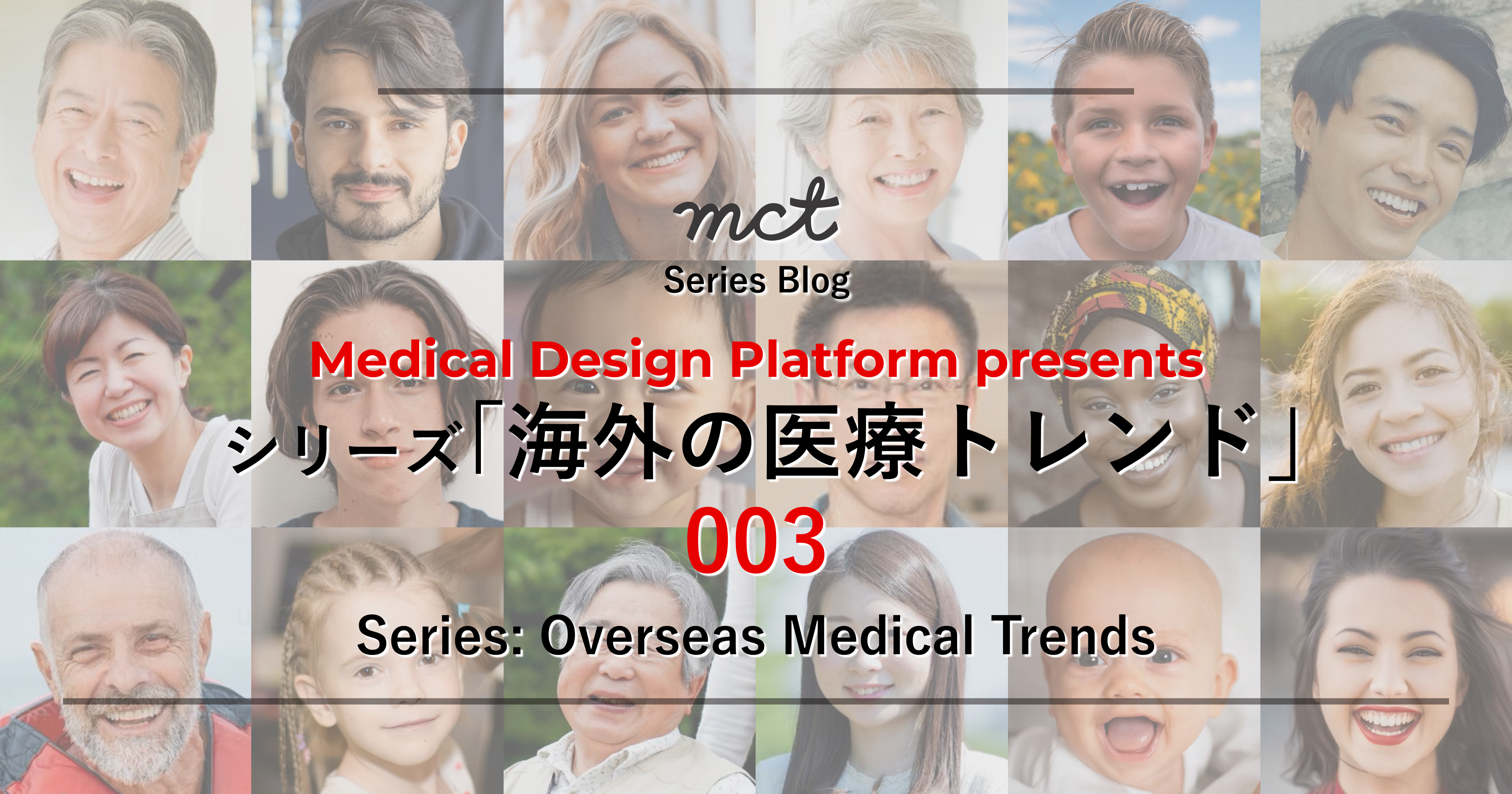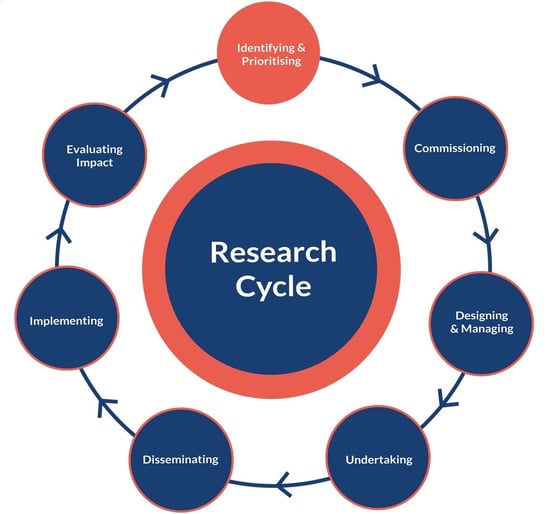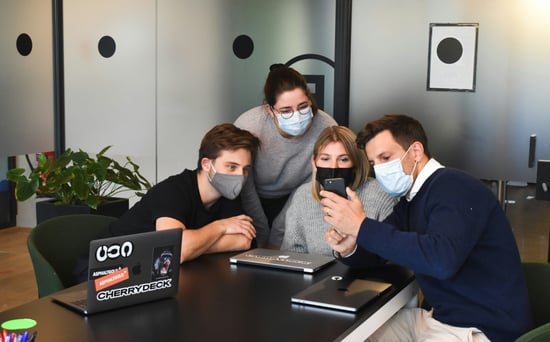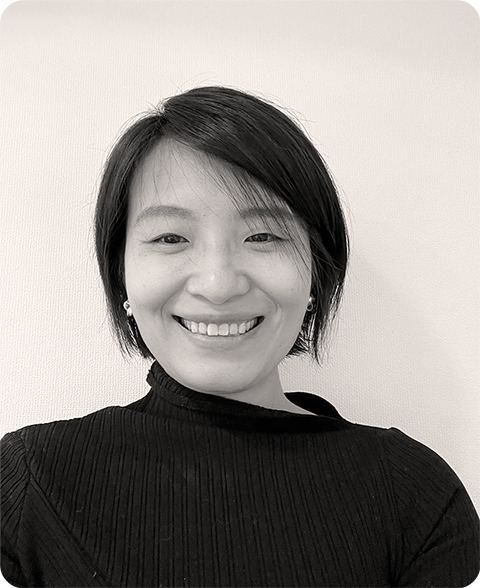2024.07.22
Series Blog|シリーズ 「海外の医療トレンド」 003 Overseas Medical Trends

シリーズ「海外の医療トレンド」は、mctのメディカルデザインプラットフォームがお届けする、
海外の医療情報をテーマとしたシリーズブログです。
“Overseas Medical Trends" is a series of blogs on overseas medical information,
brought to you by mct's "Medical Design Platform".
brought to you by mct's "Medical Design Platform".
「メディカルデザインプラットフォーム」は、顧客視点でビジネスの問題解決をお手伝いしている
株式会社mctの「患者さん中心の医療」に関わる情報やサービスを提供するユニットです。
株式会社mctの「患者さん中心の医療」に関わる情報やサービスを提供するユニットです。
"Medical Design Platform" helps solve business problems from the customer's perspective.
It is a unit that provides information and services related to "patient-centered medicine" of mct, Inc.
It is a unit that provides information and services related to "patient-centered medicine" of mct, Inc.
Vol.2 PPIを理解する
Understanding PPI
Understanding PPI
「海外の医療トレンド」を紹介するシリーズブログの1回目では、「Patient & Public Involvement」の頭文字をとった「PPI」など、患者中心主義への一般的なアプローチをいくつかご紹介しました。
今回のブログでは、「PPIとは何か?」「医療業界のプレーヤーがどのように応用しているのか?」についてさらに詳しく解説したいと思います。
In our first volume in our series on overseas medical trends, we introduced a few common approaches to patient centricity, including PPI which stands for “Patient & Public Involvement”. In this article, we will go into more details on what PPI is and how it is being applied by players in the health industry.
◆PPIとは?
What is PPI?
PPI は、元々は英国のNIHR(国立健康研究所)が設立した国家諮問グループINVOLVEによって推進されました。INVOLVEによるとPPIの定義は「研究プロセスにおける患者、国民、研究者間の積極的なパートナーシップ」であり、人々を研究のための「被験者」としてのみ利用するものではないとされています。また、研究においては、サービスを利用する患者や市民『に対して』『について』または『のために』ではなく、サービスを利用する患者や市民『とともに』『によって』研究を行うこと、とも定義されています。
Originally conceived by the national advisory group INVOLVE in the UK, which was then later integrated into NIHR (National Institute for Health and Care research), PPI is defined as “an active partnership between patients and the public and researchers in the research process, rather than the use of people as ‘subjects’ of research. In research, “PPI is often defined as doing research ‘with’ or ‘by’ people who use services rather than ‘to’, ‘about’ or ‘for’ them”[i].

では、PPIの対象となる「Patient & Public」とは誰のことを指しているのでしょうか? これには「患者、潜在的患者、介護者、医療・福祉サービスを利用する人々、特定のコミュニティの人々、サービスを利用する人々を代表する組織の人々」が含まれており、またNIHRのブリーフィングノートによれば、「現在患者であるか否かに関わらず、過去に1つ以上の健康に関する何らかの経験をした人々も含まれる」とあります。しかしNIHRの中では「Patient & Public Involvement」ではなく、単に「Public Involvement」だと言及する人もいるようで、それほど単純ではありません。いずれにせよ、研究においてPPI(あるいはPI)を追求する場合、現在の患者だけでなく、新たな解決策に対する認識や関心を持つ人々を巻き込むことが重要です。さらに言えば、幅広い範囲の患者や一般市民が研究に参加することで、より包括的な医療成果の開発に向けてDEIの原則を統合の統合をサポートすることができるのです。
So, who are the public in PPI? It includes “patients, potential patients, carers and people who use health and social care services as well as people from specific communities and from organisations that represent people who use services. Also included are people with lived experience of one or more health conditions, whether they’re current patients or not”[ii] according NIHR’s briefing notes. But it is not that straightforward, as there also seems to be those within the NIHR itself who simply refer to ‘Public Involvement’ rather than the more common Patient & Public Involvement.[iii] In either case, when pursuing PPI/PI in your research, it is important to involve people who have awareness and interest in new solutions beyond just the current patients. Additionally, having a wide scope of patients and public involved in your research can support the integration of DEI principles towards the development of more inclusive medical outcomes.
◆PPIをどのように研究に組み込むか?
How to fit PPI into research?
How to fit PPI into research?
PPIの研究に、誰を参加させるべきかが理解できたところで、次のステップはPPIの研究をより大きな取り組みに、どのように適切に組み込むかを検討することです。
標準的な研究サイクルのように、「特定と優先順位付け」→「委託」→「設計と管理」→「実施」→「普及」→「実施」→「影響評価」という7つの重要な段階があるとすれば、PPIはそのすべての段階に利益をもたらすために利用することができます。
もちろんPPI を効果的に活用するするために、研究サイクルのすべての段階で実施する必要があるというわけではありません。むしろ、研究の条件と目的に応じて、研究チームには PPI をいつどのように活用するかについてきちんと選択する必要があります。

NIHR: Briefing notes for researchers-public involvement in NHS, health and social care researchより引用
Source from NIHR: Briefing notes for researchers-public involvement in NHS, health and social care research
Source from NIHR: Briefing notes for researchers-public involvement in NHS, health and social care research
さて、PPI へのアプローチに関してNIHR は、コンサルテーション、コラボレーション、コ・プロダクション、ユーザーコントロールリサーチを、特にPPIの研究に効果的な手段として取り上げています。これらの中には非公式なチャット、デプスインタビュー、フォーカスグループインタビュー、ワークショップなど、研究サイクル全体を通じて実施できる方法も複数あります。
Now that we know who to involve in PPI research, the next step is to consider how to properly include PPI research into larger initiatives.
If we look at something like a standard research cycle, with its seven key stages - Identifying & Prioritizing, Commissioning, Designing & Managing, Undertaking, Disseminating, Implementing, and Evaluating Impact - PPI could be used to provide benefits to each stage.[iv]
That is not to say PPI has to be conducted at every stage of the research cycle to be effective, but rather depending on the conditions and objectives of the research, the team has options for how and when to use PPI.
In terms of approaches to PPI, the NIHR has highlighted consultation, collaboration, co-production, and user-controlled research as particularly effective means for PPI research.[v] Within each one of these, there are multiple ways it could be executed, such as through informal chats, depth interviews, focus groups, workshops, and so on throughout the research cycle.[vi]

◆PPIの事例
Examples of PPI
Examples of PPI
ではここからは、研究者がそれぞれのプロジェクトにおいて、 PPI を実施するために、どのようにしてさまざまな方法を柔軟に適用したのかを示すいくつかの事例を示します。
Below are a few cases which illustrate how researchers flexibly applied a variety of methods to conduct PPI in their projects.
まず1つめの例は、地域内感染のリアルタイム評価--長期にわたる新型コロナウイルス感染症研究の一環として、新型コロナウイルス感染症に罹患後、症状が長期に渡って続く人々の経験を理解しようとする定性的インタビュー研究に関するものです。このプロジェクトでは、特別なグループディスカッション、四半期ごとのオンライン公共参加会議、1対1の対話、電子メールベースのフィードバックなど、さまざまな方法で一般の人々を参加させました。またプロジェクトの初期段階で、アドバイザリーグループが組織され、フィードバックを求めるトピックガイドが電子メールで共有され、その後、彼らの提案に基づいて更新版が作成されています。

もう1つの例は、リアノン・トンプソンの博士課程での研究です。彼女は、青少年の物理的環境と精神的健康との関連を調べており、そのために彼女は、ソーシャルネットワークや職業上のネットワークから10数人のティーンエイジャーを募り、デザインワークショップに参加させ、どのようにすれば質問に答えられるかをディスカッションしています。また2人の参加者による求人広告、参加者情報シートなどの文書草案のレビューをはじめ、インタビュー設計と定性データ分析のヘルプと合わせて、彼女は大量の情報を収集し、ユニークな視点を獲得してインタビュー計画を充実させることができました。
上の2つの事例では、PPI はその研究において、とてもポジティブな結果をもたらしました。NIHRのブリーフィングノートによると、PPIは研究の関連性と質を高め、より広く民主主義の原則に貢献し、研究者が忘れがちなユニークな視点を提供し、そして計画された研究が倫理的になるようにサポートしてくれるなど、複数のメリットをもたらすことができる、としています。
One example is about a qualitative interview study trying to understand experiences of people with long-lasting symptoms after having COVID-19 as part of the REal time Assessment of Community Transmission – Long Covid (REACT-LC) study. In this project, diverse methods were used to involve the public such as ad hoc group discussions, quarterly online public involvement meetings, 1:1 conversations and email-based feedback. For instance, an advisory group was organized in the early stage of the project and topic guide was shared with them via email asking for their feedback, followed by an updated version based on their suggestions.[vii]
Another example is from Rhiannon Thompson’s PhD research, in which she was looking at the associations between physical environment and mental health among adolescents. To do so, she recruited a dozen teenagers from social and professional networks to attend a design workshop to discuss how the question could be answered. Coupled with two attendees’ draft documents review such as a recruitment advertisement, participant information sheet and help on interview design and qualitative data analysis, she was able to gather a large amount of information, receive unique perspectives and enrich the interview plan.[viii]
In the two preceding examples, PPI has yielded positive results in their research. According to NIHR’s briefing note, PPI can provide multiple benefits including enhancing the relevance and the quality of the research, serving democratic principles more widely, providing unique perspectives which could be oblivions by researchers and helping the research planned to be ethical.[ix]
◆PPIの影響
Impacts of PPI
Impacts of PPI
PPIは、ペイシェント・セントリシティ(患者中心)を強化し、医療の分野で、より共感を呼ぶサービスや成果を高めるための強力なツールとして登場し、英国のみならず、幅広い認知を獲得し続けており、西側諸国においても、ヨーロッパと北米の多くの資金提供団体によってPPIを要求、または推奨されています。
一方、欧米諸国とは対照的に、アジアにおけるPPIは、大まかに言えば、国、文化、都市部と地方の格差など、ばらつきがあるのが実情ですが、日本に目を向けると、PPI の機運は主に学会と政府機関内で高まっています。例えば、日本医療研究開発機構(AMED)は医学研究および臨床試験におけるPPIを推進しており、PPIガイドブックを発行しています。また日本臨床腫瘍グループ(JCOG)では、2018年より「患者と国民の参加委員会」を運営しています。さらには、医療・医薬品の開発に関心を寄せる患者・市民とアカデミア・製薬業界関係者がともに協議し、医療・医薬品開発に関する 考え方やそのプロセス、また倫理性、透明性の高い関係者間の協業のあり方等に関する情報発信をするためのプラットフォームとして、2019年に「患者・市民参画コンソーシアム(Patient and Public Involvement(PPI)Consortium in Japan)」が設立されました。
またファイザーの日本法人では、「治験のご案内」サイトにおいて治験情報を公開したり、治験に参加した患者に対して専門用語ではなく、分かりやすい言葉を使って治験結果を提供したり、治験に「患者さんの声」を取り入れるためのワークショップを開催するなど、医薬品開発における「Patient Centricity/Patient & Public Involvement (PPI)」の推進に取り組んでいます。
Emerging as a powerful tool to enhance patient-centricity, and thus more resonant offerings and outcomes in the health care field, ‘PPI’ has continued to gain wider recognition beyond just the UK. In the west, it has been also either required or recommended by many funding organizations throughout Europe and North America.[x]
Broadly speaking, the engagement of patient in Asia is more variable across countries, cultures and urban/rural divides.[xi] Looking at Japan, the momentum for PPI is mostly growing within academia and government agencies. For instance, Japan Agency for Medical Research and Development (AMED) has been promoting PPI in medical research and clinical trials and published PPI guidebook[xii]. Japan Clinical Oncology Group (JCOG) has been running “Patient and Public Involvement Committee” since 2018.[xiii] In addition, on July 1, 2019, “the ‘Patient and Public Involvement (PPI) Consortium in Japan’ was established as a platform for patients and citizens interested in medical and drug development, academia, and the pharmaceutical industry to discuss together and disseminate information on the concept and process of medical and drug development, as well as ethical and transparent collaboration among the parties involved.”[xiv]
Moreover, in the industry sector, Pfizer Japan is also committed to promoting “Patient Centricity /Patient & Public Involvement (PPI)” in drug development. The related actions include making clinical trial information available on “Clinical Trial Information “website, providing “Plain Language Summary” of clinical trial results to patients who participated in clinical trials, and conducting workshops on incorporating the "Patient's Voice" into clinical trials.[xv]

このように全体として、PPI を研究に適用する方法は数多くあり、医療業界における PPI には多くの可能性があります。ただし、PPI をより効果的に実施するには、PPI に関する十分な知識を得ることに加えて、患者や一般の人々への対応に関する専門知識が不可欠であることは間違いないでしょう。
Overall, there are many ways to apply PPI into research and there is certainly much potential with PPI in the healthcare industry. It is worth noting, however, that in addition to a good knowledge of PPI, expertise in dealing with patients and the public is still essential for more effective implementation of PPI.
ーーーーーーーーーーーーーーーーーーーーーーーーーーーーーーーーーーーーーーーーーーーーーーーー
References 参考文献
[ii] https://www.nihr.ac.uk/documents/briefing-notes-for-researchers-public-involvement-in-nhs-health-and-social-care-research/27371
[iii] https://www.nihr.ac.uk/documents/briefing-notes-for-researchers-public-involvement-in-nhs-health-and-social-care-research/27371
[iv] https://www.imperial.ac.uk/media/imperial-college/medicine/perc/PERCs-Rough-Guide-to-Public-Involvement---Dec-2021.pdf
[iii] https://www.nihr.ac.uk/documents/briefing-notes-for-researchers-public-involvement-in-nhs-health-and-social-care-research/27371
[iv] https://www.imperial.ac.uk/media/imperial-college/medicine/perc/PERCs-Rough-Guide-to-Public-Involvement---Dec-2021.pdf
[v] https://www.nihr.ac.uk/documents/briefing-notes-for-researchers-public-involvement-in-nhs-health-and-social-care-research/27371
[vi] https://www.imperial.ac.uk/media/imperial-college/medicine/perc/PERCs-Rough-Guide-to-Public-Involvement---Dec-2021.pdf
[vii] https://blogs.imperial.ac.uk/perc/2024/02/13/how-public-involvement-changed-our-research-question-exploring-experiences-of-people-with-long-covid/
[viii] https://blogs.imperial.ac.uk/perc/2021/05/17/involving-teenagers-in-research-about-the-environment-and-mental-health/
[ix] https://www.nihr.ac.uk/documents/briefing-notes-for-researchers-public-involvement-in-nhs-health-and-social-care-research/27371
[x] https://www.ncbi.nlm.nih.gov/pmc/articles/PMC7116097/
[xi] https://www.weforum.org/agenda/2022/11/asia-pacific-patient-engagement-healthcare/
[xii] https://www.amed.go.jp/en/ppi/guidebook.html
[xiii] https://www.ppijapan.org/files/202111_current_status_on_ppi_in_japan.pdf
[xiv] https://www.jpma.or.jp/news_room/newsletter/194/pdf/pdf-index-08.pdf
[xv] https://www.pfizer.co.jp/pfizer/development/dj-approach
[vii] https://blogs.imperial.ac.uk/perc/2024/02/13/how-public-involvement-changed-our-research-question-exploring-experiences-of-people-with-long-covid/
[viii] https://blogs.imperial.ac.uk/perc/2021/05/17/involving-teenagers-in-research-about-the-environment-and-mental-health/
[ix] https://www.nihr.ac.uk/documents/briefing-notes-for-researchers-public-involvement-in-nhs-health-and-social-care-research/27371
[x] https://www.ncbi.nlm.nih.gov/pmc/articles/PMC7116097/
[xi] https://www.weforum.org/agenda/2022/11/asia-pacific-patient-engagement-healthcare/
[xii] https://www.amed.go.jp/en/ppi/guidebook.html
[xiii] https://www.ppijapan.org/files/202111_current_status_on_ppi_in_japan.pdf
[xiv] https://www.jpma.or.jp/news_room/newsletter/194/pdf/pdf-index-08.pdf
[xv] https://www.pfizer.co.jp/pfizer/development/dj-approach
ーーーーーーーーーーーーーーーーーーーーーーーーーーーーーーーーーーーーーーーーーーーーーーーー
英語原文作成:Wenxin Huang 日本語版編集:程野耕治
英語原文作成:Wenxin Huang 日本語版編集:程野耕治
■ mctは創薬におけるPPIの取り組みを支援しています。PPIに関するご相談はこちら ■
-

-
Wenxin Huang
株式会社mct エクスペリエンスデザイナー
- CX・顧客経験
- 組織デザイン
- インサイト
- グローバル
- 顧客中心
- ヘルスケア
- 患者理解
- 製薬
- サスティナビリティ
- 患者中心
- PPI
- PSP
- SDM
- ビジネスデザイン
- ペイシェント・セントリシティ
- イベント告知
- イノベーション
- デザイン思考
- 働き方
- DMN
- コ・クリエーション
- チームワーク
- セミナー
- 働き方改革
- ZMET
- エクスペリエンスデザイン
- futuredesign
- covid19
- エスノグラフィックリサーチ
- デザイン
- デザインリサーチ
- リモートコラボレーション
- ワークショップ
- 事業開発
- ソリューション
- カスタマージャーニー
- オンラインワークショップ
- ギャップファインディング
- 従業員体験
- signal
- ブランディング
- 技術開発
- 101_design_methods
- フューチャーデザイン
- CXマネジメント
- エンゲージメントデザイン
- サービスデザイン
- トレーニング
- メソッド
- シグナル
- 機会探索
- PlayfulNetwork
- マインドセット
- COM-B
- SDGs
- UIデザイン
- サーキュラーエコノミー
- フューチャー思考
- AI
- CSA Research
- UXデザイン
- mcTV
- プレイフル
- 事例
- 製品・サービス開発
- Forrester research
- フィールドワーク
- メタファー
- リフレーム
- Employeeexperience
- エフェクチュエーション
- カルチャーコード
- クルースキャン
- シグナル探索
- ビジネスデザインプログラム
- フレームワーク
- プロトタイピング
- CX4DX
- CultureMeetup
- PRO
- gamefulCX
- leadership
- mct labo
- お知らせ
- ゲームデザイン
- デザインスプリント
- トレンドリサーチ
- ビジネスモデル
- 映像編集
- MOT
- NELIS
- Remo
- インタラクションマップ
- デジタルエクスペリエンス
- デジタルツール
- バイアス
- ファシリテーション
- プロダクトジャーニー
- 学習
- LGBT
- wasedaneo
- インタビュー
- インプロ
- セルフドキュメンタリー
- デザインシステム
- デザイントレンド
- デザインマネジメント
- デジタル
- ベンチマークリサーチ
- リーダーシップ
- リーンスタートアップ
- ロードマップ
- 伴走型支援
- 創造性開発
- 動的安定性
- 反脆弱性
- 学習体験デザイン
- 市場調査
- 測定
- 用途開発
- 研修
- 経営戦略
- 調査設計
- 資本提携


